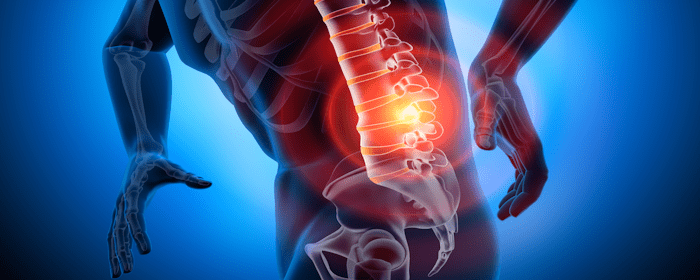
by admin | Aug 12, 2025 | Age Management, Mesenchymal Stem Cells, Regenerative Medicine, Stem Cell Research, Stem Cell Therapy, Studies
Aging is a universal biological process marked by the gradual decline of physiological function across all organ systems. It is driven by a combination of genetic, environmental, and molecular factors that influence the rate of deterioration from birth onward. Although inevitable, scientific progress in regenerative medicine has identified potential ways to mitigate its effects and improve health span.
Among the most promising developments are mesenchymal stem cells (MSCs), which exhibit regenerative, immunomodulatory, and anti-inflammatory properties that may counteract age-related degeneration.
In this review, El Assad et al. examine the role of stem cells in tissue maintenance, disease, and the regulation of aging, emphasizing the importance of understanding their in vivo properties, functions, and mechanisms of control.
The Biology of Aging
Aging reflects the body’s reduced ability to maintain equilibrium, repair damage, and adapt to environmental stressors. It occurs at both the cellular and systemic levels, influencing physical, cognitive, and metabolic functions. Chronological age represents the time elapsed since birth, whereas biological age measures the functional condition of tissues and organs. Biological aging varies significantly among individuals due to differences in molecular processes such as oxidative stress, DNA repair, and cellular metabolism.
Scientists have proposed multiple theories to explain aging. The free radical theory suggests that oxidative molecules accumulate and damage cells over time. The telomere shortening theory focuses on the gradual erosion of chromosome end caps that limit cell replication. The mitochondrial theory highlights the role of declining energy production and increased oxidative stress. Together, these mechanisms lead to progressive cellular dysfunction, tissue deterioration, and loss of resilience.
Recent research emphasizes the goal of extending health span—the period of life spent in good health—rather than lifespan alone. The field of geroscience seeks to identify biological targets that influence aging, aiming to prevent or delay chronic diseases and maintain functional independence in later life.
Systemic Changes Associated with Aging
Aging affects multiple systems simultaneously. In the visual system, reduced contrast sensitivity, slower dark adaptation, and diminished processing speed are common. Hearing loss, known as presbycusis, arises from oxidative damage and cellular loss in the cochlea, reducing the ability to perceive high frequencies and distinguish speech in noisy environments.
Musculoskeletal aging leads to the loss of bone density and muscle strength. Skeletal decline begins after peak bone mass is achieved, and bone loss accelerates in postmenopausal women due to hormonal changes. Muscle atrophy results from both reduced muscle fiber size and loss of fibers, contributing to weakness, frailty, and decreased mobility. Genetic, nutritional, and lifestyle factors influence these processes.
The immune system also undergoes decline, a process termed immune senescence. Aging alters immune cell function and communication, reducing the body’s ability to mount responses to infections or vaccines and increasing susceptibility to cancer, autoimmunity, and chronic inflammation.
Molecular and Cellular Drivers of Aging
In 2013, López-Otín and colleagues identified nine “hallmarks of aging” that form the foundation for understanding age-related decline. These include genomic instability, telomere attrition, epigenetic alterations, loss of proteostasis, deregulated nutrient sensing, mitochondrial dysfunction, cellular senescence, stem cell exhaustion, and altered intercellular communication.
More recent discussions have expanded this list to include additional processes such as dysregulated RNA metabolism, altered mechanical properties, microbiome imbalance, chronic inflammation, and defective autophagy. Together, these mechanisms disrupt normal cellular activity, leading to progressive tissue degeneration and functional impairment.
Stem Cells and Tissue Renewal
Stem cells are undifferentiated cells capable of self-renewal and differentiation into various specialized cell types. They serve as a cellular reserve for tissue maintenance, repair, and regeneration. Two primary categories exist: embryonic stem cells, derived from early-stage embryos, and adult stem cells, present throughout the body in specific tissues.
Mesenchymal stem cells (MSCs), a subtype of adult stem cells, have gained attention for their regenerative potential and therapeutic applications. They can be isolated from bone marrow, adipose tissue, umbilical cord, and other sources. MSCs are multipotent, capable of differentiating into bone, cartilage, muscle, and fat cells, and they secrete biologically active molecules that modulate inflammation, enhance repair, and protect against cellular stress.
Mesenchymal Stem Cells in Aging and Regeneration
MSCs play an important role in counteracting age-related physiological decline. They exert effects not only through direct differentiation into functional tissue cells but also through the secretion of paracrine factors, collectively known as the secretome. This includes cytokines, growth factors, and extracellular vesicles such as exosomes.
Exosomes are nanosized vesicles carrying proteins, lipids, and genetic material that facilitate intercellular communication. By transferring molecular cargo to neighboring cells, they can stimulate tissue repair, angiogenesis, and immune modulation. The secretome and exosomes together form a complex signaling network that supports regeneration and reduces inflammation.
Experimental studies have demonstrated the rejuvenating potential of MSCs. In one investigation, transplantation of MSCs from young mice into older mice improved metabolic function, reduced obesity, and enhanced physical activity. Other research indicates that adipose-derived MSCs improve skin elasticity and vascular growth, suggesting applications in aesthetic and wound-healing contexts.
Mechanisms of MSC-Mediated Repair
Mesenchymal stem cells (MSCs) and their secretome influence a wide range of biological pathways that are central to the aging process and tissue repair. They regulate immune responses by releasing anti-inflammatory cytokines that help counteract inflammaging, the chronic, low-grade inflammation associated with tissue damage.
Through their ability to differentiate into osteoblasts, chondrocytes, and other specialized cell types, MSCs replace damaged or aging cells and promote structural repair in musculoskeletal, cardiovascular, hepatic, and neural tissues. They also exhibit anti-fibrotic effects by inhibiting the TGF-β1 signaling pathway and reducing oxidative and hypoxic stress, thereby preventing the buildup of scar tissue that can impair organ function.
Exosomes derived from MSCs carry antioxidant enzymes and signaling molecules that protect cells from oxidative injury and apoptosis, while MSCs further enhance mitochondrial performance to boost cellular energy and resilience. In addition, MSC-derived factors can delay or reverse cellular senescence, preserving the proliferative potential of resident cells, and remodel the extracellular matrix to maintain tissue structure and elasticity.
Growth factors in the MSC secretome stimulate angiogenesis and wound healing by promoting new blood vessel formation, improving oxygen and nutrient delivery to tissues. Finally, MSCs and their exosomes support autophagy—the cellular process that removes and recycles damaged components—helping sustain cellular renewal and contributing to overall longevity.
Therapeutic Implications and Challenges
MSCs exhibit a wide range of regenerative effects, positioning them as a cornerstone of emerging anti-aging and regenerative medicine strategies. They can act directly by differentiating into new tissue or indirectly by releasing bioactive molecules that orchestrate repair processes. These dual functions offer potential applications in managing musculoskeletal degeneration, cardiovascular disease, skin aging, and neurodegeneration.
However, the authors of this review highlight significant challenges that must be addressed before MSC-based therapies can be widely adopted. The therapeutic outcomes of MSC treatment vary depending on donor characteristics, tissue source, and cell culture conditions. Standardized methods for cell preparation, quality control, and delivery must be established to ensure safety and reproducibility. Additionally, while preclinical data are promising, large-scale clinical trials are required to confirm long-term efficacy and assess potential risks such as immune reactions or unintended cell behavior.
Exosome-based therapies may offer a promising alternative by providing the regenerative benefits of MSCs without the complexity of transplanting living cells. Because exosomes can be stored, purified, and standardized more easily than whole cells, they represent a potentially safer and more controllable approach to regenerative treatment.
The Road Forward for Stem Cell–Based Anti-Aging Therapies
Mesenchymal stem cells represent a key frontier in understanding and potentially mitigating the biological mechanisms of aging. Their unique combination of regenerative capacity, immunomodulatory action, and paracrine signaling positions them as valuable tools for maintaining tissue integrity and delaying functional decline. Experimental evidence indicates that MSCs can reduce inflammation, enhance tissue regeneration, and modulate senescence-related pathways, all of which contribute to healthier aging. Continued research is essential to define optimal protocols for MSC isolation, preparation, and administration, as well as to evaluate long-term outcomes in clinical applications.
While stem cell therapy remains an evolving field, the accumulated evidence suggests that MSCs and their secretome could play a central role in future strategies to promote longevity, prevent age-related diseases, and extend the period of health during aging.
Source: El Assaad N, Chebly A, Salame R, Achkar R, Bou Atme N, Akouch K, Rafoul P, Hanna C, Abou Zeid S, Ghosn M, Khalil C. Anti-aging based on stem cell therapy: A scoping review. World J Exp Med. 2024 Sep 20;14(3):97233. doi: 10.5493/wjem.v14.i3.97233. PMID: 39312703; PMCID: PMC11372738.

by admin | Aug 7, 2025 | Extracellular Vesicles, Pulmonary Fibrosis, Regenerative Medicine, Stem Cell Research, Stem Cell Therapy, Studies
Pulmonary fibrosis is a chronic and progressive lung disease marked by abnormal scarring of the tissue surrounding the air sacs. This process thickens and stiffens the lungs, leading to shortness of breath, fatigue, and reduced oxygen exchange.
Current medications, such as pirfenidone and nintedanib, can slow disease progression but do not reverse tissue damage. As a result, researchers are pursuing regenerative strategies that can modulate inflammation, suppress fibrosis, and promote repair.
One of the most promising emerging therapies involves extracellular vesicles (EVs) derived from mesenchymal stromal cells (MSCs). These nanosized, membrane-bound particles carry bioactive molecules—such as proteins, microRNAs (miRNAs), and metabolites—that influence immune responses and tissue repair. Importantly, MSC-EVs appear to replicate many benefits of stem cell therapy while avoiding the challenges of administering live cells, such as immune rejection or variable differentiation in vivo.
As part of this study, Li et al. examined the safety and efficacy of mesenchymal stromal cell–derived extracellular vesicles (MSC-EVs) from human umbilical cord (hUCMSC-EVs) in preclinical mouse models and in patients with pulmonary fibrosis.
Targeted Delivery Through Nebulization
Li’s research team developed a method for delivering hUCMSC-EVs via nebulization, producing a fine aerosol that can be inhaled directly into the lungs. This delivery route targets the site of disease, enhances local concentration, and minimizes systemic exposure.
In mouse models, fluorescently labeled hUCMSC-EVs rapidly accumulated in the lungs within hours of inhalation and persisted for several days, confirming targeted distribution. This lung-specific retention supports nebulization as a practical and efficient method for respiratory delivery.
Manufacturing and Quality Assurance
To ensure safety and consistency, the hUCMSC-EVs were produced under Good Manufacturing Practice (GMP) conditions using a standardized cell bank. Multiple critical quality control points were implemented throughout production, verifying vesicle size (50–400 nm), morphology, surface markers (CD9, CD63, CD81), and sterility.
Tests confirmed the absence of bacterial, viral, and mycoplasma contamination and validated biological activity through immune-modulating assays. Analysis of the vesicles’ RNA, protein, and metabolite content demonstrated high batch-to-batch reproducibility, underscoring their stability and reliability as a biologic product.
Molecular Composition and Mechanisms of Action
Comprehensive profiling revealed that microRNAs made up nearly 60% of the total RNA cargo within the hUCMSC-EVs, with over 1,400 unique miRNAs identified. Many are involved in regulating inflammation, cell differentiation, angiogenesis, and extracellular matrix remodeling—key pathways disrupted in fibrosis.
Proteomic analysis identified more than 1,000 proteins enriched in processes such as wound healing, cytoskeletal organization, and cell adhesion, while metabolomic profiling revealed over 100 metabolites related to amino acid and energy metabolism. According to the authors, these findings suggest that hUCMSC-EVs deliver a coordinated set of molecular signals that can reduce inflammation, inhibit fibroblast activation, and support tissue regeneration.
Preclinical Results in Pulmonary Fibrosis Models
Using the bleomycin-induced pulmonary fibrosis mouse model, the researchers assessed both safety and efficacy. Mice received various doses of nebulized hUCMSC-EVs, followed by imaging, physiological measurements, and histological evaluation.
The treatment significantly improved survival, restored lung volume, and reduced fibrotic lesions compared to control groups. Micro-CT scans showed reduced tissue density and less bronchial distortion, while histology confirmed preservation of alveolar architecture and decreased collagen accumulation.
Even when therapy began after fibrosis was established, hUCMSC-EVs slowed or partially reversed disease progression. Interestingly, moderate doses produced the most favorable outcomes, suggesting that efficacy may depend on optimizing dosage rather than simply increasing the quantity delivered.
Immune Modulation and Antifibrotic Mechanisms
Further analysis revealed that nebulized hUCMSC-EVs increased expression of miR-486-5p, a microRNA known to suppress inflammatory signaling and regulate macrophage behavior. Macrophages are central to the progression of pulmonary fibrosis: when activated into a pro-inflammatory (M1) state, they promote injury, while their alternative (M2) phenotype supports repair.
After EV treatment, Li et al. found that macrophages in the lung shifted toward an M2-dominant profile. This was accompanied by increased expression of antifibrotic and regenerative genes (IL-10, MMP13, HGF) and reduced levels of SPP1, a fibrosis-associated gene. These results indicate that hUCMSC-EVs exert their effects largely by reprogramming the immune environment, mitigating inflammation, and promoting resolution of tissue injury.
Phase I Clinical Trial: Safety and Feasibility
Following preclinical success, a randomized, single-blind, placebo-controlled Phase I clinical trial was conducted in 24 adults with pulmonary fibrosis confirmed by high-resolution CT imaging. Participants continued standard therapy; half received nebulized hUCMSC-EVs twice daily for seven days, and half received saline.
Safety was the primary endpoint. Throughout treatment and one year of follow-up, no serious adverse events, allergic reactions, or clinically significant laboratory abnormalities were observed. Blood counts, liver and kidney function, and inflammatory markers remained stable, confirming a strong safety profile for inhaled hUCMSC-EVs.
Early Clinical Indicators of Efficacy
Although designed primarily to assess safety, the study also collected exploratory measures of lung function and patient-reported outcomes.
Patients who received nebulized hUCMSC-EVs demonstrated notable improvements in forced vital capacity (FVC) and maximal voluntary ventilation (MVV) compared to the control group. Questionnaire scores also improved: St. George’s Respiratory Questionnaire results decreased, indicating reduced symptom burden, while Leicester Cough Questionnaire scores increased, reflecting improved quality of life.
Radiographic evaluation revealed stable disease in most participants, consistent with the short treatment duration, but two patients with post-inflammatory pulmonary fibrosis showed partial regression of fibrotic lesions on CT imaging. According to the authors, these cases highlight the potential for genuine structural recovery with this therapy.
Advantages of Nebulized Delivery
Nebulized administration offers several advantages for chronic lung diseases. Delivering therapy directly to the lungs ensures higher local concentrations and reduces systemic exposure, minimizing potential side effects. It also allows for noninvasive, repeatable dosing, which is more patient-friendly than intravenous infusion.
The preclinical biodistribution data align with these advantages, showing sustained lung localization with gradual clearance—an ideal profile for localized therapy in fibrotic lung disease.
Comparison with Other EV-Based Therapies
The study adds to a growing body of evidence supporting nebulized EVs as a safe and feasible approach for pulmonary diseases. Previous preclinical studies have shown benefits of EVs derived from adipose MSCs or platelets in models of emphysema and acute lung injury. However, hUCMSC-EVs may be uniquely advantageous due to their scalable production, immune compatibility, and consistent molecular content.
Current Limitations and Research Needs
Despite encouraging findings, several limitations remain. The Phase I study involved a small cohort and short treatment period. Larger, longer-term trials are necessary to evaluate sustained clinical benefit, dose optimization, and durability of effect.
Because EVs are complex biologics, their content can vary based on donor source and culture conditions. Ongoing work in standardization and molecular characterization will be critical to ensure reproducibility at scale. Future studies should also identify biomarkers to predict which patient populations—such as those with post-inflammatory fibrosis—may respond best to this therapy.
Clinical Implications and Future Outlook
For clinicians and researchers, hUCMSC-EVs represent an innovative, cell-free approach to addressing the underlying inflammation and scarring of pulmonary fibrosis. The therapy combines the biological sophistication of stem cells with the precision and safety of a targeted inhalation route.
Early evidence suggests that nebulized hUCMSC-EVs are not only safe but may improve lung function and quality of life when added to standard therapy. If validated in larger studies, this strategy could complement existing medications, offering patients a regenerative option that directly addresses tissue repair rather than symptom control alone.
Conclusion
According to Li et al., nebulized hUCMSC-EVs demonstrate strong potential as a next-generation therapy for pulmonary fibrosis. Produced under GMP conditions and characterized with rigorous quality controls, these vesicles carry bioactive molecules capable of regulating immune activity, reducing fibrosis, and supporting lung repair.
Preclinical studies showed clear survival and structural benefits in animal models, while early human data confirmed safety and signaled meaningful clinical improvement.
Although further research is required to confirm long-term efficacy and optimize treatment protocols, this study marks a significant step forward in regenerative pulmonary medicine. Nebulized MSC-derived extracellular vesicles may ultimately provide a practical, effective, and safe tool to slow or even reverse the devastating effects of pulmonary fibrosis.
Source: Li M, Huang H, Wei X, Li H, Li J, Xie B, Yang Y, Fang X, Wang L, Zhang X, Wang H, Li M, Lin Y, Wang D, Wang Y, Zhao T, Sheng J, Hao X, Yan M, Xu L, Chang Z. Clinical investigation on nebulized human umbilical cord MSC-derived extracellular vesicles for pulmonary fibrosis treatment. Signal Transduct Target Ther. 2025 Jun 4;10(1):179. doi: 10.1038/s41392-025-02262-3. Erratum in: Signal Transduct Target Ther. 2025 Jul 17;10(1):235. doi: 10.1038/s41392-025-02293-w. PMID: 40461474; PMCID: PMC12134356.

by admin | Jun 5, 2025 | Chronic Pain, Regenerative Medicine, Stem Cell Research, Stem Cell Therapy, Studies
Chronic low back pain (cLBP) remains one of the most prevalent and disabling conditions worldwide, significantly affecting the quality of life and productivity for millions of individuals. For those dealing with discogenic cLBP—pain caused by degeneration or damage to the intervertebral discs—the journey toward lasting relief is often frustrating and unsuccessful. Traditional treatment options frequently fall short, prompting a growing interest in regenerative medicine.
The objective of this study was to evaluate the safety and efficacy of a novel, pragmatic algorithm that both diagnoses and treats cLBP by first identifying annulus fibrosus tears (fissures) in the region of symptoms and then delivering targeted fibrin sealant therapy to support disc repair and functional recovery.
Limitations of Traditional Treatments
Surgical options such as spinal fusions and discectomies have long been used to manage disc-related pain. However, these procedures carry inherent risks and may inadvertently accelerate degeneration. Fusions can increase stress on adjacent discs, while discectomies may weaken the disc structure, making them less than ideal for long-term relief.
Regenerative techniques such as bone marrow aspirate concentrate (BMC) and platelet-rich plasma (PRP) injections offer more conservative alternatives. Still, they lack a crucial component—adhesive properties that enable the treatment to remain within the disc and target the damaged tissue. Without a way to stay in place, these therapies often fail to promote true disc healing.
Evaluating Fibrin Sealant as a Regenerative Option
Fibrin, a natural component of the body’s wound healing process, offers unique advantages as a regenerative therapy. As a bio-adhesive, fibrin can immediately bind to tears in the annulus fibrosus—the tough outer layer of the disc—helping to stabilize the structure and promote tissue regeneration. This property makes fibrin an ideal candidate for treating chronic discogenic pain in a minimally invasive way.
A recent study explored the use of intra-annular injections of allogeneic fibrin sealant to treat patients suffering from chronic low back pain, even after multiple failed interventions. The results are compelling and suggest a promising path forward for individuals living with this difficult condition.
Study Overview and Patient Population
This retrospective cohort study involved 827 patients who had suffered from chronic low back pain—with or without radiculopathy (leg pain due to nerve irritation)—for a minimum of six months. The average duration of symptoms before treatment was 11.2 years, highlighting the severity and chronicity of the condition in the study group.
Participants had already failed at least four invasive treatments, including PRP, BMC, epidural steroid injections, and radiofrequency neurotomies. Some had even undergone failed surgeries such as discectomies and spinal fusions. The mean patient age was 56, and the cohort included 70% men and 30% women.
To qualify, patients underwent MRI and radiographic evaluations to rule out other conditions like spinal fractures, malignancies, severe instability, or significant stenosis. Only those who met strict inclusion criteria were eligible for treatment.
Diagnostic and Treatment Process
The study utilized annulargrams, an imaging technique used during the procedure to identify annular tears within the disc. These diagnostic tools were performed concurrently with the fibrin injections, providing real-time guidance to ensure precise delivery.
Allogeneic fibrin sealant was then injected into the identified fissures in the annulus fibrosus using fluoroscopic imaging to guide placement. Because fibrin adheres directly to the tissue, it integrates with the disc and creates a scaffold for tissue repair.
This innovative approach combines diagnosis and treatment in a single session, improving efficiency and potentially reducing healthcare costs. Future research may examine the cost-effectiveness of this streamlined model.
Promising Patient Outcomes
The results of the study were highly encouraging. Significant improvement was observed at one, two, and three years after the procedure across multiple outcome measures, including the:
- Oswestry Disability Index (ODI)
- Visual Analog Scale (VAS)
- PROMIS® Physical and Mental Health Scores
At the 12-month follow-up, 50% of patients achieved the minimum clinically important difference (MCID) in the ODI score, indicating meaningful functional improvement. Importantly, these positive outcomes were consistent across age, gender, comorbidity, and prior treatment history.
Interestingly, patients who had previously undergone surgery saw even greater relative improvement than those who had not. This finding suggests that fibrin injections may offer an effective second-line treatment for patients who did not benefit from surgical interventions.
Safety and Adverse Events
No severe adverse events or infections were reported in the study, which is consistent with existing literature showing low complication rates from interventional spine procedures. Fibrin’s natural bio-compatibility may contribute to its favorable safety profile.
Given the high safety margin and promising results, fibrin sealant appears to be a well-tolerated and effective treatment option for patients with discogenic low back pain.
Study Limitations and Future Directions
Despite its promising outcomes, the study was not without limitations. It was a retrospective analysis of prospectively collected data, and it lacked a randomized control group. Participants acted as their own controls through pre- and post-treatment comparisons. Additionally, the voluntary nature of treatment selection may have introduced selection bias.
The gender imbalance (30% female, 70% male) also limits the generalizability of results. Future studies should aim for more gender-balanced samples to better understand how the treatment performs across populations.
Patient compliance with follow-up assessments decreased over time, which may have affected the consistency of long-term outcome data. Still, the data were independently collected and analyzed by statisticians using validated tools from the Regenerative Orthobiologics Registry, which adds credibility to the findings.
To strengthen the evidence base, future studies should include randomized controlled trials (RCTs), longer follow-up periods, broader patient populations, and comparative studies against other biologics like PRP and BMC.
A New Path Forward in Regenerative Spine Care
For patients who have struggled with years of chronic low back pain, intra-annular fibrin sealant offers new hope. Its unique adhesive properties allow it to bind securely within the disc, facilitating healing where other treatments have failed. Even in patients with extensive treatment histories, including failed surgeries, fibrin sealant injections demonstrated the ability to restore function and relieve pain.
This study highlights the regenerative potential of harnessing the body’s own healing mechanisms in a minimally invasive way. It also sets the stage for larger clinical trials that can solidify fibrin sealant’s place in the treatment landscape for discogenic cLBP.
Fibrin Sealant Injections: A Breakthrough in Regenerative Treatment for Chronic Discogenic Back Pain
Intra-annular injections of allogeneic fibrin sealant represent a safe, effective, and innovative approach to managing chronic discogenic low back pain and radiculopathy. With improvements documented across both physical and mental health outcomes—and a favorable safety profile—this treatment offers a compelling alternative for patients who have not responded to traditional therapies.
As the field of regenerative medicine continues to evolve, treatments like fibrin sealant provide not only physical relief—but also hope—for those whose lives have been disrupted by chronic back pain.
Source: Pauza K, Boachie-Adjei K, Nguyen JT, Hussey Iv F, Sutton J, Serwaa-Sarfo A, Ercole PM, Wright C, Murrell WD. Long-term Investigation of Annulargrams and Intra-annular Fibrin to Treat Chronic Discogenic Low Back Pain and Radiculopathy: 1-, 2-, and 3-Year Outcome Comparisons of Patients with and without Prior Surgery. Pain Physician. 2024 Nov;27(8):537-553. PMID: 39621982.

by Stemedix | Apr 15, 2024 | Multiple Sclerosis, Health Awareness, Neurodegenerative Diseases, Skin Care, Studies
Multiple sclerosis (MS) is a neurological disorder that can affect all of your body systems. People suffering from MS often report neurological, muscular, and skin problems as the disease progresses. If you have MS, you may develop puzzling skin symptoms and conditions that need to be addressed.
Your skin is the largest organ in your body, and it may need extra support if you have multiple sclerosis. Learn how MS symptoms and medications can affect your skin in your daily life.
Why MS Causes Skin Problems
Multiple sclerosis is a neurodegenerative condition that leads to increasing nerve damage over time. As a result, the ways your body experiences pain and physical sensations will change.
Nerve Degeneration
Some of this is purely neurological. As your nerves experience damage from this condition, they may misfire pain or sensitivity signals within your skin. You could have odd sensations, sensitivity to cold and light touch, and other skin problems.
Medication Side Effects
Additionally, Multiple sclerosis medications can lead to negative effects on your skin. Some of these prescriptions may irritate or inflame soft tissues in your body. As a result, you may experience infections, lesions, and rashes.
Common Neurological Skin Symptoms and Problems
When your nerves aren’t working properly, the way your body senses and responds to external stimuli (like touch) changes. These symptoms are what’s known as neurological skin problems. They don’t directly affect the appearance or texture of your skin, but these issues do impair your daily life.
Paresthesia
One of the earliest symptoms of Multiple sclerosis is paresthesia. This broad skin sensation can manifest in many different ways. Not everyone who experiences paresthesia has MS, but most MS patients deal with paresthesia at some point.
Some symptoms of paresthesia include:
- Numbness
- Tingling
- Prickling sensations
- Burning
- “Pins and needles”
- Tickling sensations
- Feeling like your skin is “crawling”
These symptoms show up even when nothing is physically touching your skin. Paresthesia is most common in your extremities — fingers, toes, hands, feet, legs, and arms. However, you may experience paresthesia in different spots on your body over time.
Neuropathic Itch
This skin problem is slightly different from paresthesia. When you develop neuropathic itch, it may feel like nothing will relieve the deep burning itch. Many MS patients struggle with this, and it doesn’t always involve external touches or stimuli.
Another name for neuropathic itch is pruritus. Even if there’s nothing physical causing the itch, it’s still a real sensation. It can be frustrating when the itch won’t resolve, even if you’ve scratched your skin excessively.
Skin Sensitivity: Cold, Touch, and More
MS patients experience extreme sensitivity to heat, cold, and touch due to nerve damage. This means even the lightest touch or slightest change in temperature can trigger a strong reaction in your body.
This makes everyday life difficult for obvious reasons. When you feel extreme pain and aversion to light touch or mild temperatures, it can be difficult to complete tasks and participate in society.
MS Medication and Skin Problems
Many MS patients have medications prescribed from their physician. However, the side effects aren’t always pleasant, particularly when it comes to your skin.
There are a wide variety of prescription drugs used to treat MS, so your specific symptoms will depend on what you’re taking. For example, monoclonal antibodies target certain immune cells to reduce the neurodegenerative and inflammatory effects of MS. However, this can irritate your skin and cause other unwanted side effects.
Here are some of the skin symptoms you may notice after taking MS medications.
Hives and Rashes
Patchy, itchy spots and raised hives can both stem from MS medications. This is because MS prescriptions deal with your immune system, inflammatory responses, and other bodily processes. These systems can and do interact with your skin, and sometimes, it responds by breaking out in hives or rashes.
Redness and Flushing
Some oral MS medications cause hot flashes, which make your skin look red and flushed. This is similar to the temporary skin sensations caused by exercise or anxiety. Most flushing sensations go away within 30 minutes of taking your medication, but they can still be a nuisance.
Skin Lesions
Some injections and infusions that treat MS can lead to skin lesions, which can affect your confidence and comfort. You may notice large or small skin lesions, with some being discolored or bruised.
Secondary Infections
When you have MS, your immune system constantly works overtime. This can weaken your defenses against secondary infections, like skin infections.
Scratching weakens your skin barrier, which can allow bacteria to enter your skin matrix and cause infections. If you’re dealing with neuropathic itch, you’re especially at risk.
Certain MS medications also make you more susceptible to skin infections. Injectable prescriptions carry the risk of exposing bacteria to different layers of your skin. Improper needle use and poor needle hygiene can both result in skin infections.
You’ll need antibiotic treatments for secondary skin infections, as these are bacterial and won’t go away on their own. Always consult your doctor for help with skin infections.
Care for Your Body to Reduce Your Skin’s Risk
Having MS is exhausting and can be debilitating. However, practicing physical and emotional self-care whenever possible can be beneficial. Caring for your overall health can reduce the impact MS has on your skin, making it less susceptible to infections and unpleasant symptoms.
Some forms of self-care for MS patients include:
- Getting plenty of rest
- Exercising regularly
- Journaling
- Meditating
- Eating a nutritious diet
- Doing yoga
- Spending time in MS support groups
- Talk therapy
These are all wonderful strategies for supporting your psychological and physical health when you have MS.
Be Prepared: Know the Most Common MS-Related Skin Symptoms
You can prepare yourself by learning about what you can expect after an MS diagnosis. MS has many detrimental effects on the body, but you can reduce some of these effects through stress relief and self-care. As you improve your overall well-being, you may notice skin improvements as well.

by Stemedix | Apr 1, 2024 | Stem Cell Research, Age Management, Mesenchymal Stem Cells, Regenerative Medicine, Stem Cell Therapy, Studies
According to the Centers for Disease Control and Prevention, four million adults in the United States have fibromyalgia. It’s an often-misunderstood condition that leads to systemic joint and muscle pain, along with fatigue, making daily life very difficult. To deal with the pain the condition causes, it’s important to understand why it occurs. Learn more about fibromyalgia and your pain management options.
What Is Fibromyalgia? Symptoms and Causes
Fibromyalgia is a condition that leads to pain and tenderness all over the body. It’s a chronic condition, though symptoms tend to come and go. During flare-ups, the pain can be significant enough to interfere with daily life while also affecting sleep, leading to mental and physical distress.
During a flare-up, you can experience:
- Fatigue
- Pain
- Headaches
- Face and jaw pain
- Bladder control issues
- Digestive problems
- Insomnia
It’s not clear what causes fibromyalgia, but scientists have found that certain conditions, as well as stress, can trigger it. You are also more likely to have this condition if you have a relative who suffers from it. Women are twice as likely as men to develop it.
People living with conditions like arthritis, depression, anxiety disorders, and irritable bowel syndrome are more likely to develop fibromyalgia.
Fibromyalgia can affect people of all ages, including children, but it’s more common in those who are middle-aged.
Diagnosing Fibromyalgia
If you’re experiencing symptoms, your doctor will likely perform a physical exam and discuss your medical history. There’s no test that can officially diagnose fibromyalgia, so your doctor will do what’s called a differential diagnosis — a kind of investigation that functions via a process of elimination.
Your doctor may order blood work to check hormone levels and look for signs of inflammation to help eliminate other diseases.
During the physical examination, your doctor will likely check for the presence or absence of tender spots by using light pressure.
Most of the time, if you have generalized pain that lasts for three months or more without any other underlying conditions, you’ll receive a diagnosis of fibromyalgia. The pain has to be spread throughout your body to get this diagnosis.
Treating Fibromyalgia: What You Can Expect
There isn’t one treatment that works for everyone. Usually, your doctor will try a number of different options, combining them to offer the most effective results.
Your provider will likely treat the condition depending on the symptoms you’re currently experiencing. There are stages of treatment, though these aren’t treatment plans that can be followed in order because the condition can affect you differently during every flare-up.
Exercise to Loosen Muscles
In some cases, turning to physical exercises, including stretching, can help loosen your muscles and ease some of the discomfort.
Low-impact exercises like walking and swimming help build flexibility that can improve your movement during flare-ups while simultaneously helping manage pain with the release of endorphins they stimulate. Exercise may also help you get better sleep.
Medications for Symptom Management
Over-the-counter medications can help manage pain, as can narcotics, though your doctor will prescribe these with care since they can lead to dependence.
Antidepressants can often also help the process, easing some of the fatigue and pain. For those who have trouble sleeping because of fibromyalgia, sleeping aids are often a good choice.
Heat and Cold Therapy for Milder Pain
In some cases, heat and cold therapy is also effective in managing some symptoms, especially if they’re mild. Alternating hot and cold packs helps the muscles release some of the tension that could be causing pain.
Occupational Therapy for Everyday Tasks
Turning to an occupational therapist is a great way of finding out how to restructure your life when you experience flare-ups. This type of therapist can help make adjustments to your work areas while also helping you find better ways of performing certain tasks so that you experience fewer symptoms.
Massage and Acupuncture to Improve Range of Motion
Massage therapy is a trusted technique. It relies on the manipulation of your muscles and soft tissues, increasing blood flow and improving range of motion while helping reduce pain. For many, it helps relieve stress, too, which can impact the severity of the symptoms.
Acupuncture is also helpful, with the needles affecting blood flow levels and even how certain neurotransmitters in the brain work.
Lifestyle Changes for Flare-Up Reduction
Making changes to your everyday life is an important way of helping minimize the symptoms of flare-ups, so try to incorporate some into your daily life. The right options can depend on your preferences. Some people turn to meditation, while others prefer to do breathing and mindfulness exercises.
Regenerative Medicine to Handle Inflammation
One option people choose to try because of its promise is regenerative medicine.
The variety of treatments available include platelet-rich plasma therapy and stem cell therapy, which uses mesechymal stem cells to reduce inflammation and help calm the immune system. This makes it possible to better handle symptoms when you do have a flare-up.
Stem cell therapy is easy to combine with other treatment options and doesn’t require a long recovery period or the stress of dealing with side effects. Stem cell therapy and other regenerative medicine options help treat the underlying triggers like inflammation, so you’re not just covering symptoms with medications.
Living With Fibromyalgia
It can seem daunting to live with a chronic condition like fibromyalgia, but with some lifestyle changes and an understanding of what triggers your flare-ups, as well as a combination of treatments, you can better manage the condition.
If you’re dealing with fibromyalgia, ask your doctor whether an option like stem cell therapy and other regenerative medicine treatments can help.
Choosing options that target inflammation and trying to get to the underlying cause of the problem instead of only masking the symptoms can make it possible to live a happy and healthy life with fibromyalgia. To learn more about pain management for Fibromyalgia visit our website or contact us now!

by Stemedix | Feb 19, 2024 | COPD, Pulmonary Fibrosis, Stem Cell Research, Stem Cell Therapy, Studies
Chronic obstructive pulmonary disease affects 16 million adults in the United States, according to the National Heart, Lung, and Blood Institute. COPD refers to two main conditions — chronic bronchitis and emphysema. If you’ve received a COPD diagnosis, it can be tough to know what to expect from the disease as it progresses. For many people, one of the leading questions is whether COPD can be reversed. Learn more about this disease and what kind of treatments offer promising results.
Symptoms of Chronic Obstructive Pulmonary Disease
COPD occurs because of damage to the airways or other parts of the lungs, blocking airflow and making it more difficult to breathe. Both chronic bronchitis and emphysema can lead to the development of COPD.
Chronic bronchitis affects your bronchial tubes, which carry air to and from your lungs. Bronchitis irritates these tubes, leading to the production of mucus that narrows the tube’s opening, making it much harder to breathe.
Usually, hair-like structures called cilia move mucus out of your airways, but the irritation from bronchitis damages the cilia.
Emphysema is a condition that affects the air sacs at the end of the bronchial tubes. These air sacs assist in the transfer of oxygen into your blood and carbon dioxide out. Emphysema destroys the walls of these sacs, making it tough to get a breath.
COPD can cause symptoms that include:
- Shortness of breath
- Chest heaviness or tightness
- Fatigue
- Ongoing cough
- Whistling or wheezing when you breathe
- Cough with mucus
Not everyone who has COPD experiences all of these symptoms.
Causes of COPD
One of the biggest risk factors of COPD is smoking. The majority of people who have COPD smoke or has a history of smoking. If you have a family history of COPD, you are more likely to develop it if you smoke. Smoke irritates the airways, causing inflammation while also damaging the cilia that moves mucus.
If you’ve suffered long-term exposure to other lung irritants, you could also be at risk. Irritants can be chemical fumes, dust, air pollution, smoke from home cooking, and heating fuel. Secondhand smoke can also be a factor.
Your age is also a consideration if you have other risk factors. Most people who have COPD are at least 40.
Infections like tuberculosis and HIV also put you at risk. If you have asthma, you also could experience COPD.
One of the potential genetic causes of COPD is a condition called alpha-1 antitrypsin (AAT) deficiency. If you have this condition, long-term exposure to fumes or smoking can result in lung damage, leading to COPD. AAT deficiency makes it easier to develop the disease earlier in life.
Treatment of COPD: Managing Symptoms
Treating COPD means finding ways of decreasing symptoms. The first thing you have to do is to quit smoking if you’re still engaged in this habit. Continuing to smoke as you deal with COPD will only make the condition worse.
Bronchodilators and steroids are options that can help with symptoms. If you have mild COPD, your doctor may prescribe short-acting bronchodilators that you use only when you experience symptoms. These bronchodilators relax the muscles around the airways.
If you have a more severe case of COPD, you may need to take bronchodilators every day. In some instances, your doctor may prescribe them along with steroids.
Can COPD Be Reversed? For some people, pulmonary rehabilitation is helpful. This option includes exercise training and breathing techniques to help you better manage the symptoms.
Oxygen therapy is another option. You receive supplemental oxygen from tubes that rest in your nose, a face mask, or a tube that goes into your windpipe.
Surgery is generally only done in people with severe COPD that doesn’t respond to other treatment options. There are a few different types of surgeries. Getting a lung transplant is another option, though it is even rarer than surgery.
Slowing the Progression of COPD: Promising Options
Although it’s not yet possible to reverse the conditions, it can be possible to slow down the progression of COPD. The first step is to get an early diagnosis and intervention. If you suspect you have COPD, it’s important to ask your doctor for a spirometry test.
If you have a family history of the condition or have smoked for a long time, it can help to get a test even if you don’t have symptoms.
It can also be helpful to learn both diaphragmatic breathing and pursed-lip breathing. Diaphragmatic breathing stimulates relaxation and increases oxygen saturation while also reducing the amount of air trapped in your lungs. Pursed-lip breathing, on the other hand, offers quick relief for someone experiencing shortness of breath and wheezing.
You will also need to avoid environmental triggers. These triggers can include air pollutants, extreme temperature changes, smoke, and strenuous activities.
Additionally, stem cell therapy offers the chance to slow down the progression of COPD. It uses stem cells to stimulate your body to start healing itself. It could speed up your lungs’ ability to heal themselves.
Stem cell therapy can also be helpful in preventing inflammation by assisting you in producing anti-inflammatory molecules.
One of the best things about stem cell therapy and other regenerative medicine options is that it’s minimally invasive and doesn’t require a long recovery process. You also don’t have to worry about side effects or rejections.
Living With COPD: Choosing the Best Treatment Strategies
Once your lungs suffer the kind of damage COPD causes, reversing the condition is usually not an option. However, this doesn’t mean you can’t improve your symptoms and even dramatically slow down the disease’s progression.
Can COPD be reversed? By turning to the right treatment options and making the necessary lifestyle changes, It’s possible to start seeing positive changes.
Stem cell therapy is an option that offers the chance to help your body heal itself, even if not entirely. A combination of treatments can be the most effective way of dealing with COPD, so make sure to speak with a specialist on your treatment options.







 St. Petersburg, Florida
St. Petersburg, Florida
